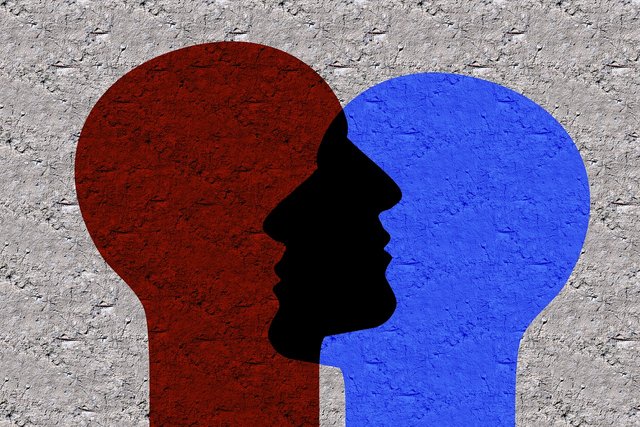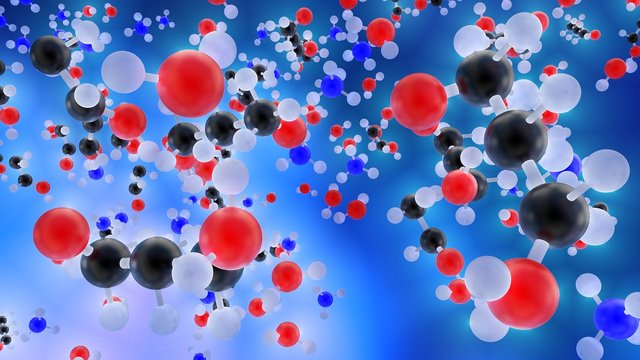PTSD: The Psychology and Neurology of Trauma and Psychedelic Treatments
In this article I consider PTSD (post traumatic stress disorder), neurological and psychological contributing factors, potential treatments in psychedelics, and anecdotes. This is a reformed version of a previous post from when I just joined Steemit and can be found in my early posts.

Psychological Trauma can be debilitating and extremely persistent. Through history there have been debates among the psychological and biological fields, as well as in the general population, about what causes people to develop the extreme anxiety and stress symptoms of PTSD following exposure to trauma. Controversy surrounds whether the cognitive damage is simply a result of experience, which would suggest that given the same situation, anyone would experience the same amount of psychological symptoms, a consequence of one’s characteristics such as his or her biology or psychological traits, or a combination of these two factors. Hence the debate over the causes and meaning behind trauma are closely related to the larger debate about nature versus nurture.
Trauma is inherently difficult to define and even more difficult to quantify. It is hard to compare one traumatic event to another, as they vary over a multitude of dimensions. Everyone’s encounter with trauma is unique; researchers and clinicians must have a standardized method of measuring traumatic events and diagnosing PTSD. In the Diagnostic and Statistical Manual of Mental Disorders 5 (DSM-5), PTSD is said to occur when an individual: “directly experiences the traumatic event; witnesses the traumatic event in person; learns that the traumatic event occurred to a close family member or close friend (with the actual or threatened death being either violent or accidental); or experiences first-hand repeated or extreme exposure to details of the traumatic event (not through media, pictures, television or movies unless work-related),” that causes the individual “clinically significant distress or impairment in the individual’s social interactions, capacity to work or other important areas of functioning.” Using this definition, we can use statistics to determine what factors of such events contribute to higher percentages of people to develop PTSD.

Two major factors that influence whether one gets PTSD are presence and degree of experienced dissociation during the event(s) and the individual’s psychological conceptualization of the event(s). More dissociation correlates to a higher likelihood of developing PTSD, and more psychological resilience correlates to a lower likelihood. In this paper I will address these two aspects of trauma and discuss some of the important elements of both dissociation and resilience.
A dissociated state is characterized by detachment from physical and emotional experience, often warping one’s sense of time and identity. These states can range in extremity, duration, and psychological impact. The precise definition of psychological dissociation is not firmly agreed upon, something that Van Der Hart and colleagues (2004) argue limits our “understanding of trauma related dissociation.” While there is significant dispute about what should qualify as legitimate trauma induced dissociation, most definitions share the idea that a critical aspect of the phenomenon is related to information processing integration.
The mechanisms by which abnormal integration may occur and the behavioral outcomes are not fully agreed upon either. Some researchers, like van der Hart and colleagues, argue that dissociation occurs by absence of integration within “psychobiological systems that constitute personality” (from van der Hart et al. 2004, see Friedman et al., 2007). Other researchers suggest it is “characterized by profound developmental differences in meta-cognitive functions" (Putnam 1997).
Cardena and Carlson (2011) used the terms positive dissociation and negative dissociation to specify the varying symptoms reportedly experienced. A positive dissociation involves discontinuity of experience accompanied by unpleasant involuntary “intrusions into awareness and behavior.” A negative dissociation would involve an “inability to access information or control mental functions, manifested as symptoms such as gaps in awareness, memory, or self-identification.” Accompanying these positive and negative dissociation, Candena and Carlson also describe an “experiential disconnectedness that may include perceptual distortions about the self or environment.” This experiential disconnectedness and the positive and negative dissociation symptoms might be experienced simultaneously or individually by a person.

In some more severe cases, people report experiences of ego death or complete loss of time perception. This is a common effect of psychedelic compounds as well. Ego death refers to a complete denationalization and identity loss. These symptoms are abstract in nature, and consequently difficult to describe let alone recall. David Morris utilizes his journalistic skill to convey his experience of how trauma manipulated his perception of time:
“…Trauma destroys the fabric of time. In normal time, you move from one moment to the next, sunrise to sunset, birth to death. After trauma, you may move in circles, find yourself being sucked backwards into an eddy, or bouncing about like a rubber ball from now to then and back again. August is June, June is December. What time is it? Guess again,” wrote Morris in his book, The Evil Hours. Trauma doesn’t only alter one’s experience after the event, “it corrodes everything that came before, eating at moments and people from your previous life, until you can’t remember why any of them mattered.” This articulation, though chilling, accurately describes the anecdotal experience of many who suffer PTSD.
In this biography, Morris recalls the time he was involved in a roadside bomb explosion. Morris says that while he may have only literally been blown up once, but he has experienced it thousands of times. Due to the uncontrollable obsessive nature of these flashbacks, some of the most successful treatments for PTSD involve eastern mindfulness techniques. Any activity that brings full consciousness into the present moment can be extraordinarily helpful. “Yoga seems to do this by encouraging you to focus on the ‘now’ of your physical self,” writes Morris on page 238. Neuroscience evidence from mindfulness based research supports the use of these techniques for treatment of PTSD. A recent study concluded that mindfulness-based exposure treatment (MBET) group therapy for PTSD “may lead to changes in neural processing of social–emotional threat related to symptom reduction” after face viewing social-emotional cues (King, A. P. et al. 2016). Post-treatment results were correlated with increased activity in rostral anterior cingulate cortex, dorsal medial prefrontal cortex (mPFC), and left amygdala versus pre-treatment results.

In her story, Brain on Fire, Susanna speaks about her experience with a rare autoimmune disease that targets the NMDA receptors located in the hippocampus. She experienced severe memory loss, altered personality, hallucinations, mood swings, seizures, and described herself as being turned back into a child. Losing function in these receptors which are necessary for normal functioning, can cause extreme dissociation. She essentially lost her sense of self along with her capacity to remember and function normally. This disease, while traumatizing to experience, gives us a window into the neuronal mechanisms behind dissociation.
Extreme trauma induced dissociation, such as that depicted in experiences of complete ego loss, are difficult to imagine. Interestingly enough, hallucinogenic drugs can induce similar disconnected states. There is evidence that drugs which induce dissociation including tryptamines like LSD and Psilocybin (Shroder, 2014), DMT (Nielson & Megler, 2014), Ketamine (Dang et al., 2014), and MDMA (Doblin, 2002) may benefit PTSD patients.

These drugs were studies rather extensively for a brief period in the 1950’s, but came under scrutiny after recreational popularization in the 60’s. Only recently has the government allowed more studies to be conducted, but they are few and far between; it is very difficult to receive permission to study these drugs, despite their non-addictive and highly therapeutic properties. Roland Griffiths, a psychopharmacologist at Johns Hopkins, is one of the few recent researchers who has been granted permission to study Psilocybin. In this test, people with life-threatening cancer were administered Psilocybin during a cognitive therapy session. Surprisingly, more than 70% of the participants rated the experience as one of the top five most important events in their lives. These interventions helped patients come to terms with death, and reduced anxiety and depression in many. Perhaps the most exciting aspect of these therapies is that a single session can drastically change a person’s outlook on life, affecting them years after the experience.
Just as trauma is a difficult thing to measure, the various factors associated with one’s response are not fully understood. If two people who go through extraordinarily similar traumatic events (or even the same event), one may have a maladaptive reaction and develop PTSD while the other reacts healthily, and may even grow from the experience. Every person is unique in their genetic makeup and environmental exposure, and therefor may react quite differently from each other to the same situation. An individual’s biology, personality, and mental state at the time of a traumatic incident all contribute to how well they will deal with it.
Resilience can be defined in psychology as the effective adaptation in the face of traumatic or stressful circumstances. It could be argued that resilience is composed of the opposite ingredients to dissociation. The individual possesses a strong internal locus of control, and is immensely in tune with his or her self. If dissociation is characterized by losing touch with one’s self-identity, resilience would be characterized by maintaining self-identity despite environmental disturbance. While some people may be better equipped mentally than others even before experiencing a traumatic event, resilience can also be learned.

There is a strong connection between resilience and mindfulness. Mindfulness promotes addressing one’s psychological inconsistencies and mal-adaptive behavior by making them more aware of their feelings, and giving them time to rationally consider the event and their own response. PTSD patients like David Morris who have benefited from activities like yoga and meditation praise mindfulness techniques for their effectiveness in a disorder with very few proven treatments. Mindfulness and adaptive rationalization could also be used as a preventative. Many hospitals and police departments offer support to employees who are exposed to disturbing scenarios. I believe that it is critical to provide this type of support to anyone at high risk of trauma exposure, and would especially like to see such resources available in low income public schools and in combat facilities.
Often in military training, soldiers are taught to “go numb,” this technique may be effective in keeping someone alert in dangerous situations but does not actually address the feelings associated with it. Furthermore there is certainly a stigma that ‘real men’ (and women) are not phased by extreme violence and loss. Combatants should be made aware of these facts, and briefed on why it is important to confront how they feel about their experiences at some point. It is sensible (because of the non-sensible nature of war) that these existential aspects of may not be dealt with until after physical safety is insured. Coping mechanisms like ignoring or denying lose can be helpful to insure that the individual actually gets back to a safe environment where they can deal with these issues.
The claims that weak minded individuals get PTSD, and that strong people are simply able to think their way out of a stress reaction are quite misguided. Many components are out of the control of the individual. Dissociation and biological makeup seems to be heavily implicated with the degree of post-traumatic stress developed. Practicing mindfulness, however, could increase one’s tolerance to trauma or help in the process of recovery.
After the recent explosion of research into PTSD, combine with our increased understanding of the underlying biological factors which contribute to its symptoms and potential recovery, it seems clear to say that it is neither nature or nature which fully explain why someone would or would not get PTSD. Rather, both the environment that one is in before, during, and after the traumatic event(s), and the ways in which one relates to the events psychologically and biologically determine the degree of symptoms developed. It is clear that people who get PTSD are not mentally weaker than those who do not, as the US military often claimed, nor is it sufficient to say that people only develop PTSD based on the traumatic experience(s) itself.
Thank you for reading. Feedback is always appreciated!
Recent Articles:
- Neural Plasticity: Shaping How We View Ourselves
- Attending to the Moment: The Difference Between Knowing and Understanding
- Why Quantum Mechanics can Elucidate the Nature of Consciousness
- How to Manifest your Intentions: The Philosophy and Neuroscience of Mindfulness Meditation
References:
- American Psychiatric Association. (2013) Diagnostic and Statistical Manual of Mental Disorders, (5th ed.). Washington, DC: Author.
- Dang, Y. H., Ma, X. C., Zhang, J. C., Ren, Q., Wu, J., Gao, C. G., & Hashimoto, K.
(2014). Targeting of NMDA receptors in the treatment of major depression. Current pharmaceutical design, 20(32), 5151-5159. - Doblin, R. (2002). A clinical plan for MDMA (Ecstasy) in the treatment of posttraumatic
stress disorder (PTSD): partnering with the FDA. Journal of psychoactive drugs, 34(2), 185-194. - Friedman, M. J., Keane, T. M., & Resick, P. A. (2007). Handbook of PTSD: Science and practice (2nd ed.). New York: Guilford Press.
- King, A., Block, S. R., ... & Liberzon, I. (2016). A Pilot Study of Mindfulness-based Exposure Therapy in OEF/OIF Combat Veterans with PTSD: Altered Medial Frontal Cortex and Amygdala Responses in Social-Emotional Processing. Frontiers in Psychiatry, 7, 154.
- Morris, D. J. (2015). The Evil Hours: A biography of post-traumatic stress disorder. Boston: New York: Houghton Mifflin Harcourt
- Mueller, F., Lenz, C., Dolder, P. C., Harder, S., Schmid, Y., Lang, U. E., ... Borgwardt, S. (2017). Acute effects of LSD on amygdala activity during processing of fearful stimuli in healthy subjects. Translational psychiatry, 7(4), e1084.
- Nielson, J. L., & Megler, J. D. (2014). Ayahuasca as a Candidate Therapy for PTSD. In The therapeutic use of ayahuasca (pp. 41-58). Springer Berlin Heidelberg.
- Shroder, T. (2014). ‘Acid Test’: The Case for Using Psychedelics to Treat PTSD, Depression. The Washington Post. WP Company
- Van der Kolk, B. A., van der Hart, O., & Marmar, C. R. (1996). Dissociation and information processing in posttraumatic stress disorder.
- Van der Kolk, B. A., & Fisler, R. (1995). Dissociation and the fragmentary nature of traumatic memories: Overview and exploratory study. Journal of traumatic stress, 8(4), 505-525.
- All images can be found on Pixabay.com

You just planted 1.71 tree(s)!
Thanks to @ngans
We have planted already 2523.649 trees
out of 1,000,000
Let's save and restore Abongphen Highland Forest
in Cameroonian village Kedjom-Keku!
Plant trees with @treeplanter and get paid for it!
My Steem Power = 18391.10
Thanks a lot!
@martin.mikes coordinator of @kedjom-keku
I saw a documentary many years ago that was about PTSD in soldiers.
The theory was that studies had shown that people with PTSD also had smaller amygdalas. They said it was unknown if that was because the PTSD caused it to shrink or if having a small amygdala to begin with made them much more susceptible to developing PTSD after trauma. They said not much research had been done to prove it for sure, but if the theory was correct then people should have a test prior to enlisting in the military to find out if they had an "impaired" or small amygdala. If they do then they should consider the higher chances of developing PTSD in combat before making the decision to enlist.
Any thoughts on that?
There are many studies that have studied amygdala response differences between PTSD subjects and controls:
Armony, Jorge L., et al. "Amygdala response in patients with acute PTSD to masked and unmasked emotional facial expressions." American Journal of Psychiatry 162.10 (2005): 1961-1963. LINK
Shin, Lisa M., Scott L. Rauch, and Roger K. Pitman. "Amygdala, medial prefrontal cortex, and hippocampal function in PTSD." Annals of the New York Academy of Sciences 1071.1 (2006): 67-79. LINK
Debiec, Jacek, and Joseph E. LeDoux. "Noradrenergic signaling in the amygdala contributes to the reconsolidation of fear memory: treatment implications for PTSD." Annals of the New York Academy of Sciences 1071 (2006): 521-524. LINK
The amygdala is implicated in emotional valence for many circuits and there is a clear emotional response implication with PTSD. The very defining of an event as traumatic is to consider the emotional and overall psychological implications of said event.
Thanks so much for the support and for joining the discussion!
Hello Nicholas,
Thank you for sharing the insights about PTSD. Am wondering as to your thoughts about PTSD, and CTE and is there perhaps a co-relationship with CRPS/SRD as a manifestation of either PTDS or CTE?
This is a super interesting question. PTSD often manifests in chronic stress, something that has been directly linked to CRPS. Stress can also cause other physical changes, and very likely could contribute in various ways to CTE, or other causes of neuronal degeneration. In the lab that I work in now, and the one I worked in previously, we had conducted tests that lead me to believe that excess stress-like stimuli have serious long term effects on neuro-protective signaling cascades.
Thanks so much for your response, hope to engage in further discussion! If you have any particular interests let me know, and I would be happy to explore them in a separate post!!!
My original post can be found here. Thanks so much for reading!
Thank you for sharing this wealth of information, @ngans! You shared this with me according to the use of psychedelics for the treatment of trauma, but I learned far more than my comment can summarize. Most of all, however, I appreciate learning about the connection between resilience and mindfulness. Best wishes.
Thank you so much. It really means a lot to me to know that someone got something out of this! :)
I will be posting much more related to mindfulness, psychological well-being, and neuroscience. Take care.
You got a 3.53% upvote from @postpromoter courtesy of @ngans!
Want to promote your posts too? Check out the Steem Bot Tracker website for more info. If you would like to support the development of @postpromoter and the bot tracker please vote for @yabapmatt for witness!
Fantastic article! Very informed. As a clinician who works with PTSD patients I find this post helpful. Excellent links to other resources, too. Thank you ngans.